8.04.2021
Bright comets will be scarce this year, but you can see one of the better ones this month as it races from Aquila to Canes Venatici. In other news, a new, bright nova has flared in Sagittarius.

Comet ATLAS (C/2020 R4) displays a green coma about 6′ across slightly elongated in the southwest direction in this photo made on March 27, 2021.
José Chambo
Comets are always prowling about, but most are 10th magnitude and fainter. I have nothing against faint comets. If it's 13th magnitude or brighter I'll pursue a chunk of moving fuzz any hour of the night no matter the declination. Brighter is better, of course. But as I gaze into my crystal ball in search of easy fare, only four comets will crack 10th magnitude in 2021, barring a bright, new discovery.
As always, we'll make the best of what there is. And that would be Comet ATLAS (C/2020 R4), which is just now making a fine appearance in the predawn sky in Aquila. Its name comes from the Asteroid Terrestrial-Impact Last Alert System (ATLAS) search program (ATLAS). Two telescopes, one based on Mauna Loa on the Big Island of Hawai'i and a second on Haleakalā in Maui, scan the entire sky several times a night looking for solar system objects on the move.
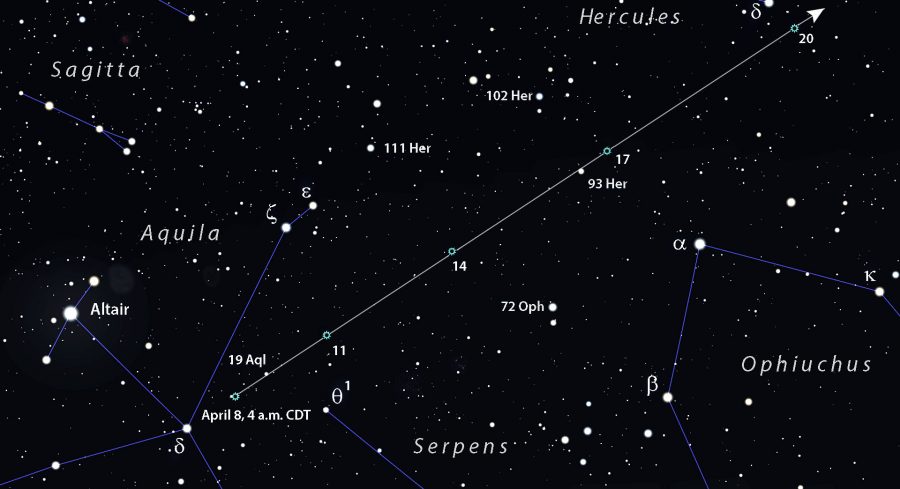
Stellarium with additions by the author
Comet ATLAS triggered this telescopic snare on September 12, 2020, when it was just a 20th-magnitude speck of light. According to the website, ATLAS has the capability of providing "a one-day warning for objects in the 30-kiloton 'town killer' range; a week for a 5-megaton 'city killer' and three weeks for a 100-megaton 'county killer.'"
WHAT'S IT LOOK LIKE RIGHT NOW?
I observed the comet in last-quarter moonlight on April 3.4 UT at magnitude 9.5 in my 15-inch (38 cm) Dob. It appeared large and diffuse, about 4′ across with a degree of condensation — or DC — of 3. DC is rated from 0 to 9 from completely diffuse (0) to stellar (9). ATLAS passed perihelion on March 1st and could become as bright as magnitude 8 around the time it passes closest to the Earth on April 23rd at a distance of 69 million km (43 million miles).
While comet tails appear infrequently, the coma, a nebulous envelope of sublimating ices, gases, and dust that forms a temporary "atmosphere" around the icy nucleus, is a distinctive feature of nearly every comet. Diatomic carbon (C2) fluorescing in sunlight causes the coma to glow green, a color enhanced with the use of a Swan Band filter. When I used the filter on ATLAS I noticed a modest improvement in its visibility.
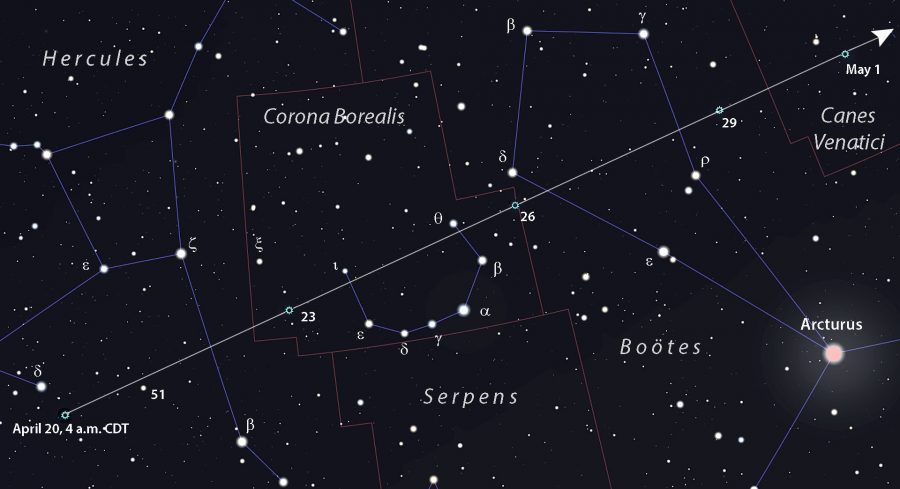
Stellarium with additions by the author
In early April, ATLAS travels about 2° per day but keeps its foot on the accelerator, topping out around 4.5° a day (11¼′ per hour) while dashing from western Hercules into Corona Borealis around the time of minimum distance from Earth on April 23rd. Throughout its apparition the comet is likely to remain a large, weakly condensed but overall bright object. It should be visible in a 6-inch telescope from dark skies.
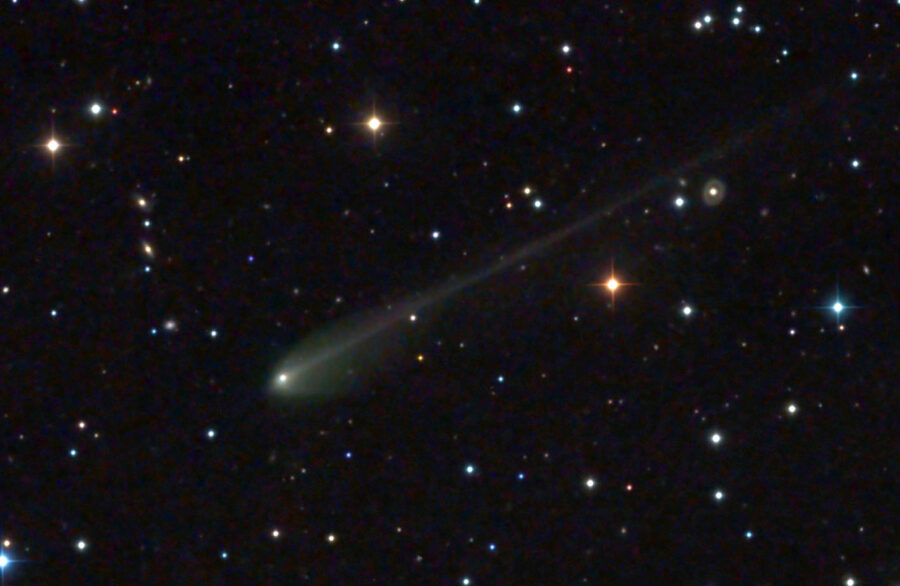
Damian Peach
During its run, the comet will make several close approaches to brighter deep-sky objects and pass through numerous faint galaxy fields. Several examples are given below. Distances are approximate because the comet is moving rapidly, with the actual separation depending on the hour you see it:
April 8 — 0.3° northeast of the open cluster NGC 6773
April 12 — 1° southwest of the the 7th-magnitude open cluster NGC 6709
April 29 — 1° southwest of the 12th-magnitude galaxy NGC 5623
Brightest in late April, Comet ATLAS is the only comet predicted to reach 9th magnitude or brighter in either hemisphere until November. Comet 7P/Pons-Winnecke may push past 10th magnitude in May and June, but the comet engine won't really start humming again until the icicles return. That's when Comet Leonard (C/2021 A1) climbs to magnitude 8 before becoming potentially as bright as 4th magnitude in December. Returning comets 67P/Churyumov-Gerasimenko and 19P/Borrelly are also expected to reach 9th magnitude in November.
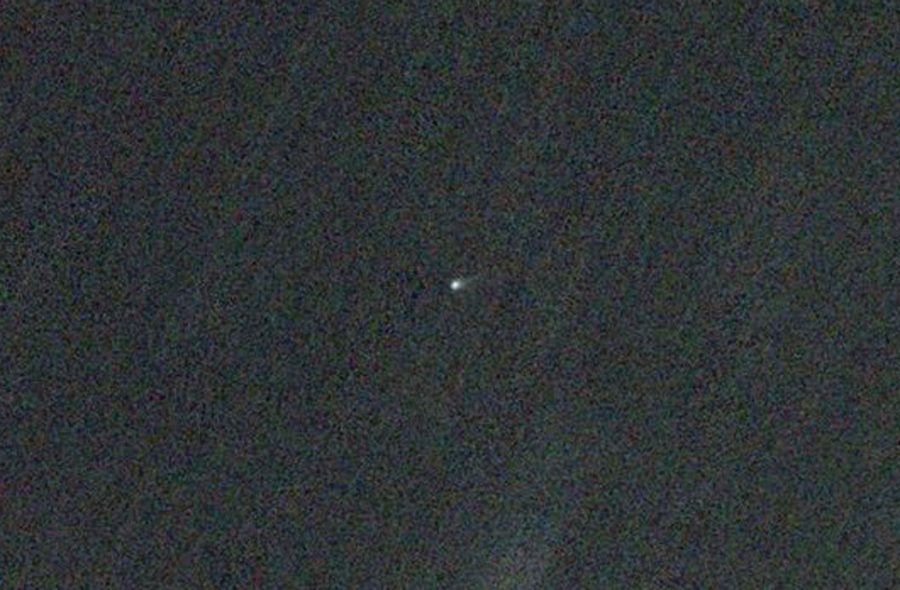
FAINTER COMETS WORTH A LOOK
Those with larger instruments can track down four additional cosmic critters during April and May: another ATLAS comet (C/2019 L3) at magnitude 12.5–13; Comet SWAN (C/2021 D1) at magnitude 12; Comet Palomar (C/2020 T2), currently at magnitude 11.5 but brightening to 11 in the coming weeks; and 10P/Tempel at magnitdue 10.5 and visible before dawn from the Southern Hemisphere.
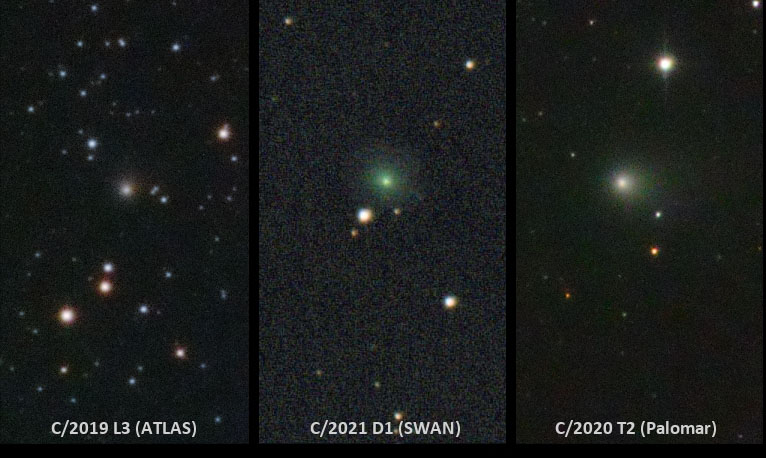
José Chambo
To find them, download Gideon van Buitenen's latest orbital elements for your software program and create your own customized maps. His elements are also included in the free planetarium program Stellarium. To use them, start the program and click on the Configuration icon in the lower left corner of the screen. Then follow this path: Plugins tab — Solar System editor — Configure button — Solar System tab — Import orbital elements — Comets button — Bookmarks — Gideon van Buitenen: comets — Get orbital elements — checkmark the comets you want to observe — Add objects. When finished, use the search function (magnifying glass icon) and type in the comet's full name to pinpoint its location in the sky.
I hope you're able to make the most of Comet ATLAS. It officially becomes an evening object by mid-month when it rises around midnight. By the third week of April you can catch it around 10:30 p.m. local time although the Moon begins to interfere. When it departs on April 28th, the comet will stand high in the southeastern sky in central Boötes at nightfall, accessible to all at a reasonable hour while still near peak brightness.
NEW BRIGHT NOVA IN SAGITTARIUS

Stellarium
While the recently discovered Nova Cassiopeiae (V1405 Cas) remains bright at magnitude 8.0–8.5, another nova just popped into view in Sagittarius. Andrew Pearce of Western Australia nabbed Nova Sagittarii No. 2 on April 4.8 UT at magnitude 8.4 with a Canon digital camera and 100-mm f/2.8 lens. As of April 6th it's risen to magnitude 7.9. Under good conditions observers should be able to spot the nova in instruments as small as 50-mm binoculars in the southeastern sky before the start of dawn.
Quelle. Sky&Telescope
